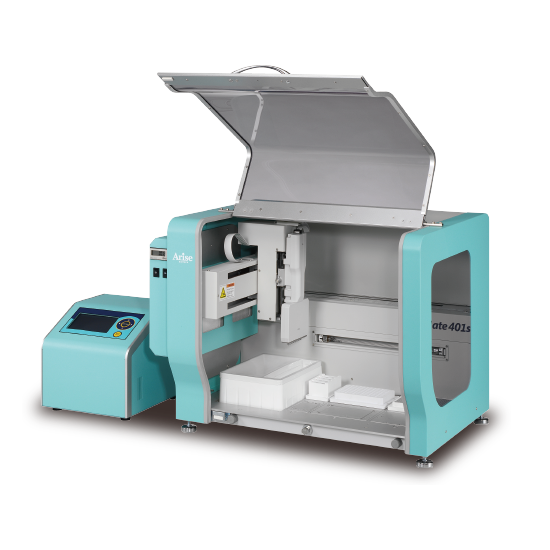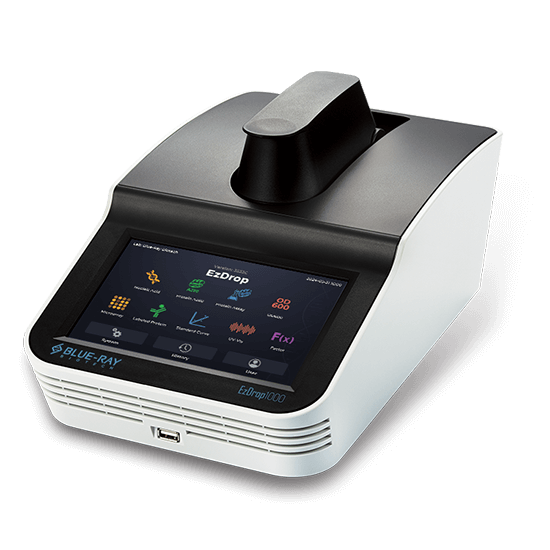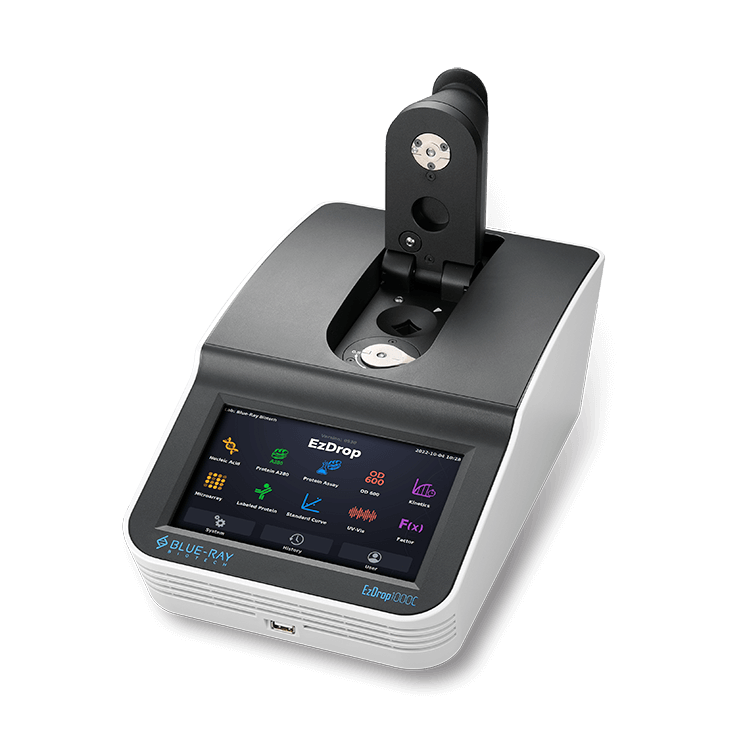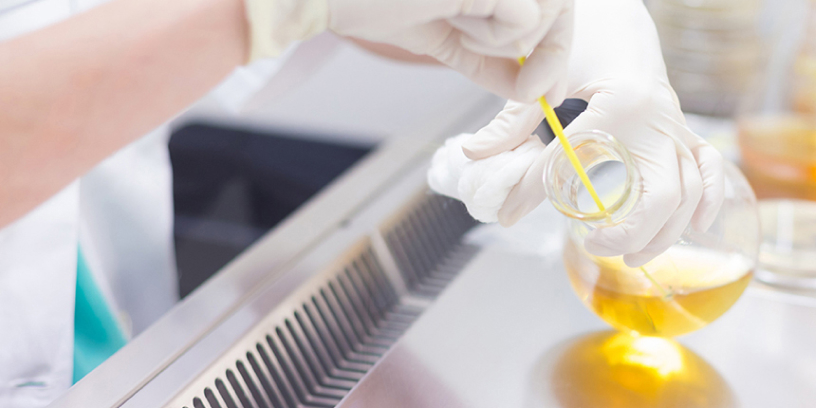
Blue-Ray Biotech’s EzMate Automated Pipetting System overcomes key challenges in tracking SARS-CoV-2
The COVID-19 pandemic creates virus-testing challenges for analytical labs. Through sample pooling and automation, labs can process more samples in less time. The EzMate Automated Pipetting System can be used for sample pooling, nucleic-acid extraction, and qPCR sample preparation. The results are more accurate, reproducible, and economical.
Table of contents
- Taking on the top challenges
- Applying automated liquid handling
- Confidence from case studies
Table of contents
- Taking on the top challenges
- Applying automated liquid handling
- Confidence from case studies
Around the world, deaths caused by SARS-CoV-2 approach five million. Plus, nearly 250 million people have contracted COVID-19, the illness caused by this virus. Public health workers need automated methods of setting up real-time PCR (qPCR) to create coordinated systems of virus detection. Setup must be fast and economical, as well as easy to use in labs working in life-or-death situations.
Today’s labs typically use one of two methods to test samples for COVID-19. Immunology quick-screen tests are easy, inexpensive, and fast, but only provide low to medium sensitivity. Nucleic-acid detection can be used to confirm results, due to the method’s high sensitivity, but it is also expensive and time-consuming. The workflow for nucleic-acid detection typically includes: sample collection on a nasal swab, nucleic-acid extraction, qPCR sample preparation, and qPCR detection.
Taking on the top challenges
This workflow creates crucial challenges for testing labs. Given the high volume of testing, throughput poses a fundamental obstacle. In many labs, technicians perform the steps manually. The nucleic-acid extraction, pipetting, and qPCR detection steps can each take up to an hour—leading to an overall process taking hours or even days in some cases. Beyond manual processing adding time, it also increases the odds of errors and contamination.
The COVID-19 testing process also generates various costs. First, instrumentation must be purchased and then maintained. The expense of maintenance will vary by location, and so will the cost of employing a technical staff to run the testing. Every test also requires reagents, which can be particularly costly.
Testing labs can take on these challenges with various approaches. One is sample pooling. Instead of testing samples one by one, samples can be pooled to get more results from fewer tests. For example, a collection of 1,536 samples—each tested three times for a total of 4,608 tests—could go into 48 pools, which require only 96 tests. In such an approach, however, a positive result requires individual testing of all of the samples. Alternatively, a method called P-BEST—Pooling-Based Efficient SARS-CoV-2 Testing—can detect individual positive samples from pooled tests. The key objective of pooling is always the same: reducing the number of tests that must be run.
The pooling, though, does not resolve all of the challenges of testing samples for COVID-19. Manual steps would still be required unless automation is added. To make testing more accurate and consistent, a system can automate the steps of nucleic-acid extraction, qPCR sample preparation, and qPCR detection. Nonetheless, the automated platform can be expensive. In addition, some all-in-one automated systems work only with specific labware and consumables, which can increase the cost of those items when compared to a manual approach.
A balance can be achieved with another approach to automation. Instead of using an all-in-one platform, an automated liquid handler can be used with an automated nucleic-acid extraction system. This provides the necessary accuracy and consistency, but at a lower cost than an all-in-one system. Plus, a lab gains more flexibility by purchasing an automated liquid handler and an automated nucleic-acid extraction system, because the devices can be used together or individually. This approach could also allow the use of open-source labware and reagents, which provides increased options in workflows and reduced cost.
New technologies can also be incorporated in the testing to reduce the complexity. As an example, direct qPCR doesn’t require a nucleic-acid extraction step. In addition, loop-mediated isothermal amplification (LAMP) PCR does not require the thermal cycling, which is fundamental to traditional methods of PCR. A combination of these methods could really speed up the testing.
Applying automated liquid handling
Across the workflow of COVID-19 testing, automated liquid handling could be used in many steps: sample pooling, nucleic-acid extraction, and qPCR sample preparation. Any of those steps can be performed with the EzMate Automated Pipetting System.
This system works well in low-volume pipetting. It also accommodates 1, 4, and 8 channel pipetting modules, and the pipetting volume range is 1–50 or 10–200 microliters, all with an accuracy of 1 microliter. Plus, this system works with most labware, including SBS format 6–384-well plate, deep -well plates, or a variety of tubes.
The EzMate can be used in many applications, including PCR/qPCR setup, preparation for next-generation sequencing, cell-based assays, and more.
Confidence from case studies
For a real-world impression of using the EzMate, let’s consider a few case studies. One used the P-BEST method of pooling, which can be complicated to do manually. With the EzMate, the locations of samples and methods of mixing can be incorporated in the protocol, which eliminates any human error. A second case study depicts direct sample preparation from a nucleic-acid extraction system in a plate. Here, the EzMate transferred samples extracted in a plate to a 96-well PCR plate. If needed, that samples could also by placed in tubes for storage or other downstream processes.
In direct sample preparation from a nucleic-acid extraction system in a tube, samples from 96 tubes were transferred to a 96-well PCR plate. So, the EzMate can transfer, plate to plate, plate to tube, and tube to plate, which reveals the flexibility of this system.
In one special application, a customer used the EzMate with a customized adapter to perform magnetic-bead extraction to combine automatic nucleic-acid extraction and downstream qPCR preparation. This is one example of a custom adapter, but the EzMate can also accommodate a vacuum adapter, a custom-vessel adapter, and others. As a result, scientists can build a system that fits a specific application.
For the last case study, scientists working on a government project applied the EzMate to direct LAMP PCR in an assay for detecting COVID-19. So, this omits nucleic-acid extraction and qPCR detection. The scientists used the EzMate to put the sample in a custom-designed tube. Then, a single-temperature incubation optical system was used for detection. In combination, this produced a faster and less expensive detection system.
The capabilities of the EzMate reveal how it can make labs more efficient in testing for COVID-19. Plus, it can be applied to many other uses and customized for new ones in the future.
- Watch our webinar to learn how to use the EzMate to speed up qPCR testing for SARS-COV-2 screening
- We offer customized solutions to suit your experiment need, contact us for further discussion.





